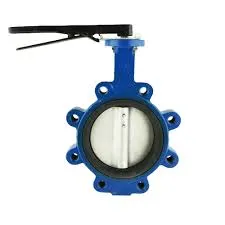11 月 . 01, 2024 02:58 Back to list
Understanding the Process of Dismantling Joints in Engineering Applications
Understanding Dismantling Joints A Key Component in Engineering
In the world of engineering, particularly in the fields of mechanical and civil engineering, the concept of dismantling joints plays a crucial role. A dismantling joint, sometimes referred to as a dismountable joint, is designed to allow the connection and disconnection of structural components without the need to cut or damage the materials involved. This makes dismantling joints essential in applications where maintenance, repair, or modification is anticipated.
Importance of Dismantling Joints
The primary function of dismantling joints is to facilitate ease of access for maintenance, which is vital in heavy machinery, pipelines, and construction structures. In environments where equipment often requires servicing, such as power plants or factories, these joints allow engineers to quickly and efficiently disassemble components. This feature not only saves time but also significantly reduces costs associated with labor and material wastage.
Additionally, dismantling joints offer flexibility in design and assembly. Engineers can design structures that require occasional access for inspections or repairs without compromising the overall integrity of the construction. This adaptability is particularly valuable in complex systems, where components are interconnected and the failure of one part could lead to cascading issues.
Types of Dismantling Joints
Dismantling joints come in various forms, each suited to specific applications and material types. Some common types include flanged joints, bolted connections, and threaded joints.
1. Flanged Joints Commonly used in piping systems, flanged joints allow significant ease of assembly and disassembly. They consist of two flanges bolted together with a gasket in between, ensuring a tight seal while remaining easily removable.
dismantling joint

2. Bolted Connections These joints are widely utilized in structural assemblies. A bolted connection involves using bolts to secure two or more structural elements. This type of joint is preferred in applications requiring high strength but where disassembly is also necessary.
3. Threaded Joints Often found in smaller applications, threaded joints utilize screws or bolts that screw into pre-threaded holes. This design is effective for small machinery or equipment but may not provide the same level of load-bearing capacity as bolted or flanged joints.
Challenges and Considerations
While dismantling joints present numerous advantages, they also bring about certain challenges. Proper design and fabrication are paramount to ensure that these joints can withstand operational stresses. Engineers must carefully consider factors such as load requirements, material compatibility, and environmental conditions during the design process.
Another consideration is that dismantling joints can introduce additional points of failure if not properly maintained or installed. Regular inspection and maintenance protocols are essential to ensure that these joints perform effectively throughout their lifespan.
Conclusion
In summary, dismantling joints are a vital component in modern engineering practices, providing essential functionality for maintenance and flexibility in design. By allowing components to be easily removed and reattached, they play a significant role in the longevity and efficiency of various structures and systems. As industries continue to evolve and demand more efficient and sustainable practices, the importance of effective dismantling solutions will only increase, underscoring the need for ongoing innovation in this area.
Share
-
Understanding the Differences Between Wafer Type Butterfly Valve and Lugged Butterfly ValveNewsOct.25,2024
-
The Efficiency of Wafer Type Butterfly Valve and Lugged Butterfly ValveNewsOct.25,2024
-
The Ultimate Guide to Industrial Swing Check Valve: Performance, Installation, and MaintenanceNewsOct.25,2024
-
Superior Performance with Industrial Swing Check Valve: The Essential Valve for Any SystemNewsOct.25,2024
-
Industrial Swing Check Valve: The Ideal Solution for Flow ControlNewsOct.25,2024
-
You Need to Know About Industrial Swing Check Valve: Functionality, Scope, and PerformanceNewsOct.25,2024